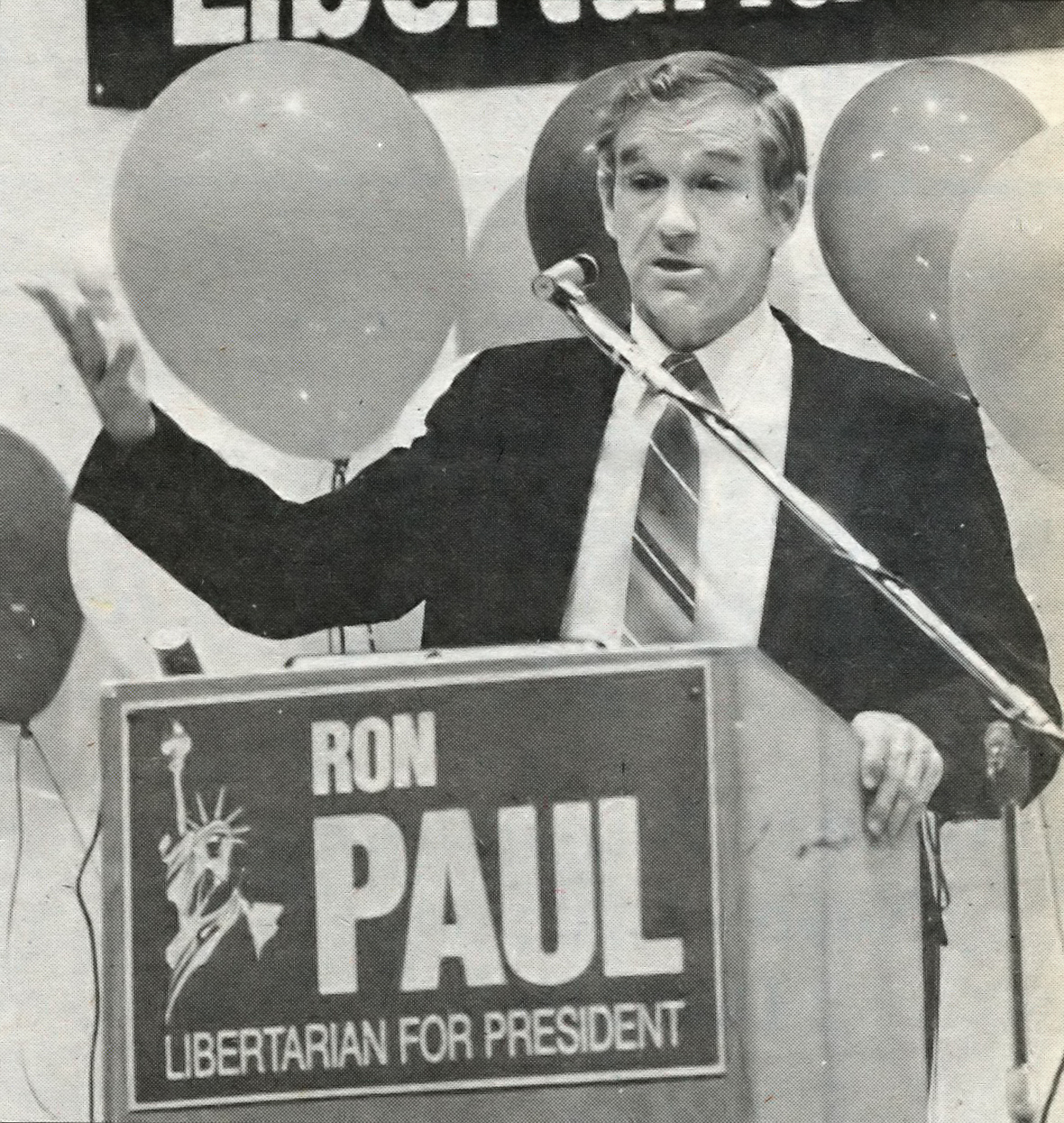
Former Vice President and Sen. Al Gore campaigns in Westwood for his 2000 presidential bid. Gore eventually lost the race to George W. Bush.

In these 1988 file photos (from top) George H. W. Bush, Ron Paul and Michael Dukakis campaign at UCLA in their attempts to win the U.S. presidency. The university has had a long history as the site of many campaign trails in its 91-year history.

Former UCLA student Gabe Rose distinctly remembers March 5, 2007, when more than 1,000 students crowded shoulder-to-shoulder in Kerckhoff patio to hear Democratic presidential hopeful John Edwards speak about the moral responsibility of the United States.
“It was huge ““ there were people overflowing out onto the lawn outside Moore Hall,” Rose said.
In the months approaching Election Day, students should not be surprised to see presidential and gubernatorial candidates on campus, rallying students to vote. Because of its location in the middle of Los Angeles and the large number of young voters present, UCLA has consistently drawn much attention from candidates, Rose said.
“UCLA has been a hub of political activity,” Rose said. “There are 40,000 students on campus, and candidates recognize the importance of the youth vote. … Young people tend to care about the world around them.”
In fact, some candidates find the campus central to their campaign, said Mike Cohn, associate director of the Center for Student Programming. In 1998, gubernatorial candidate Gray Davis and senatorial candidate Barbara Boxer closed their campaigns with a Democratic rally in Ackerman Grand Ballroom the day before polls opened.
Other political events include visits from presidential hopeful Al Gore in 2000, Gary Hart in 2009 and Howard Dean in 2009. On Oct. 13, 1988, the final presidential debate between candidates George H. W. Bush and Michael Dukakis took place in Pauley Pavilion, attracting more than 67 million television viewers. Some political figures have also paid multiple visits to UCLA at different points in their political careers. In addition to speaking at the Oct. 15 rally with San Francisco Mayor Gavin Newsom and Attorney General Jerry Brown, former president Bill Clinton also spoke at UCLA’s 75th Anniversary Convocation Ceremony in May 1994.
UCLA is a politically significant institution, as many alumni have stepped out of the university and into the political spotlight, Rose said.
“UCLA has a huge history of producing political leaders, including Congressman Brad Sherman, Mayor Antonio Villaraigosa and former Sen. Ted Stevens,” Rose said. “It speaks of UCLA’s track record of (raising) up future leaders.”
According to Dukakis, former presidential candidate and visiting public policy professor at UCLA, students are most concerned with the state of the economy and vote accordingly.
“The economic issue is front and center for everybody,” Dukakis said. “Students want to know what they will do after they graduate. The economic issues are persistent because their futures are affected.”
There is a link between candidates and issues, Dukakis said. As a result, UCLA students have expressed more concern for candidates than they do for propositions unless the proposition will directly affect students, Cohn said.
According to Rose, the UCLA student body has focused specifically on issues related to student fees, the job market, undocumented students and access to the university.
“I think people who are young and progressive identify with Democrats, so most of the candidates that come are Democrats, especially because California is not a competitive state,” Rose said.
In the three most recent elections, UCLA students have voted in line with other students across the nation, according to the Center for Information and Research on Civic Learning and Engagement exit polls. In the 2006 gubernatorial election, 61 percent of UCLA students voted Democratic and 28.5 percent voted Republican, while 55 percent of students ages 18 to 29 nationally voted Democratic and 34 percent voted Republican.
With reports by Kylie Reynolds, Bruin reporter.
